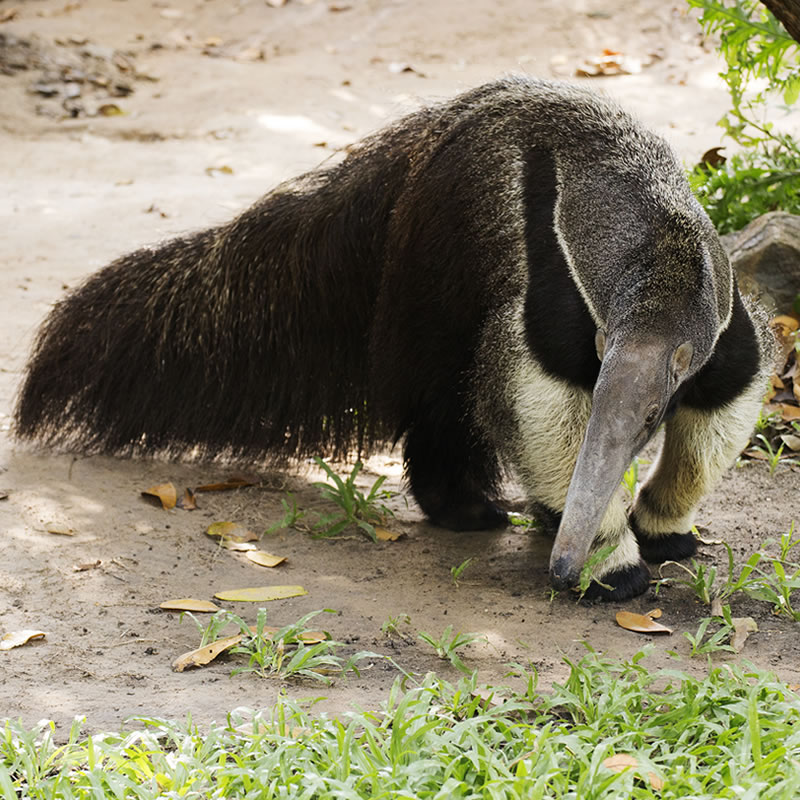
Scientific Name
Myrmecophaga tridactyla
Classification
| Kingdom | Animalia |
| Phylum | Chordata |
| Class | Mammalia |
| Order | Pilosa |
| Family | Myrmecophagidae |
| Genus | Myrmecophaga |
| Species | tridactyla |
IUCN Redlist Status

Location
Giant anteaters live in the southernmost part of Central America and throughout a large part of South America.
Habitat
They can be found in a variety of habitats including rainforests, swamps, and deciduous woodlands.
Diet
As their name suggests, giant anteaters mostly feed on ants. They will also dine on other insects, including grubs and termites. A single anteater may eat as many as 30,000 ants per day.
Size
Giant anteaters grow to be about six feet long and can weigh between 60 and 145 pounds.
Description
Their appearance is unique to most, if not all, other animals on earth. They are easily identified by their long, tube-like noses and thick, strawlike hair. Giant anteaters will use their long noses to probe large anthills and termite mounds. Tongues of giant anteaters are very long - they can grow to sizes of 2 feet in length. They will stick their long tongues, which are covered with saliva and tiny hairs, into holes of ant hills or other insect burrows to catch the insects living inside. This process can be repeated as many as 150 times a minute.
Giant anteaters have thick, tough skin to help protect them against ant bites from ants such as army ants. Even with this layer of protection, they cannot endure bites from large numbers of ants for very long. They have large and powerful claws which can be used to tear into anthills or termite mounds. They have long, gray and black fur with distinctive stripes on their shoulders. Giant anteaters have long, bushy tails that may act like blankets; they can cover themselves with their tails while sleeping. They have poor eyesight and hearing, but their sense of smell is excellent.
Reproduction
Giant anteaters are able to reproduce about every nine months. They typically give birth to one offspring at a time after a gestation period of approximately 190 days. Young are born while the mother is standing. After birth, a young anteater will immediately climb onto its mother's back. While young ride on their mother's back, their stripes align and form a type of camouflage.
Other Facts
Anteaters and aardvarks are sometimes confused with one another. While their diets are somewhat similar, their appearances are very different. Click here to visit the Aardvark page and see a picture of an aardvark.
